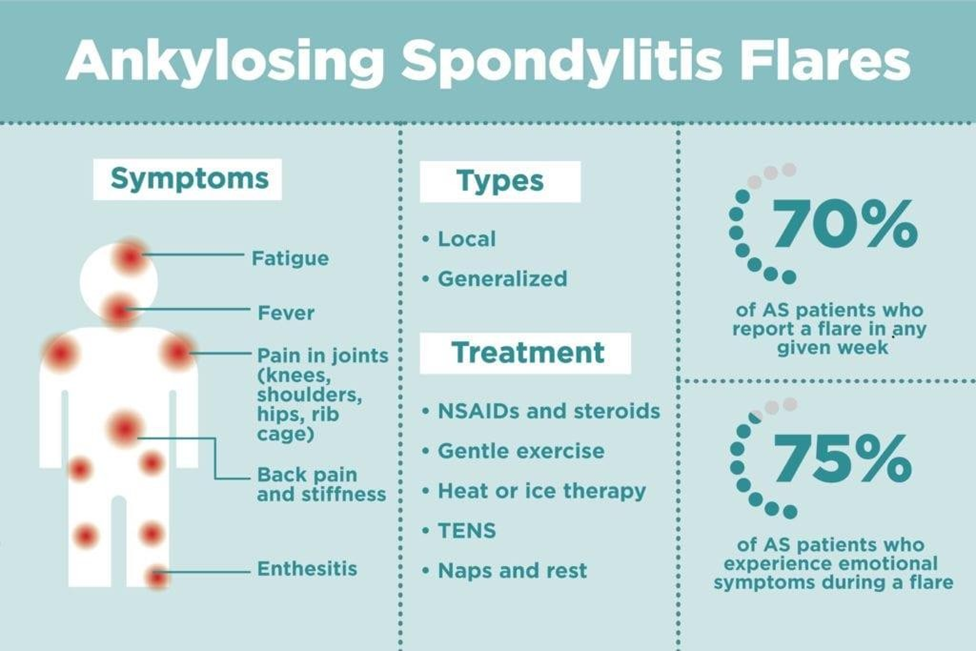The nurse is caring for a client who was recently diagnosed with Ankylosing Spondylitis.
Which of the following symptoms would the nurse expect in this client?
generalized malaise
joint inflammation and pain in the ankles
deformities of fingers and toes
progressive stiffening of the back
The Correct Answer is D
A. While generalized malaise can occur with inflammatory conditions, it is not a hallmark symptom of ankylosing spondylitis.
B. Ankylosing spondylitis primarily affects the spine and sacroiliac joints, not typically the ankles.
C. Deformities of fingers and toes are not characteristic of ankylosing spondylitis; they are more commonly associated with conditions like rheumatoid arthritis.
D. Ankylosing spondylitis is characterized by progressive stiffness and fusion of the spine, leading to decreased mobility and flexibility, especially in the lower back.

Nursing Test Bank
Naxlex Comprehensive Predictor Exams
Related Questions
Correct Answer is B
Explanation
A. HEPA filtration is not typically required for clients on droplet precautions.
B. Droplet precautions require healthcare workers to wear a mask when providing care to prevent the transmission of respiratory droplets.
C. Gowns are not typically required for clients on droplet precautions unless there is potential for contact with body fluids.
D. Negative airflow is not specifically indicated for clients on droplet precautions; it is more commonly associated with airborne precautions.
Correct Answer is C
Explanation
A. While monitoring urine characteristics is important for overall assessment, it may not be the priority in this situation.
B. Homan's sign is used to assess for deep vein thrombosis and may not be directly related to the client's current symptoms.
C. Elevated temperature after knee replacement surgery could indicate a potential infection, including pneumonia, so assessing lung sounds for signs of infection is a priority.
D. Diarrhea may be indicative of gastrointestinal issues but is less likely to be directly related to the client's current symptoms after knee replacement surgery.
Whether you are a student looking to ace your exams or a practicing nurse seeking to enhance your expertise , our nursing education contents will empower you with the confidence and competence to make a difference in the lives of patients and become a respected leader in the healthcare field.
Visit Naxlex, invest in your future and unlock endless possibilities with our unparalleled nursing education contents today
Report Wrong Answer on the Current Question
Do you disagree with the answer? If yes, what is your expected answer? Explain.
Kindly be descriptive with the issue you are facing.
